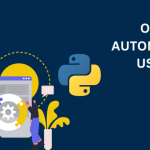CIOs of manufacturing industries are surrounded by diverse technological, market, and operational challenges. They must find a way to address key challenges and act immediately to avoid the industry/business fallout.
Digital transformation in manufacturing industry is causing much stir. Its effective implementation ought to fix various CIO challenges with ease.
In this post, let’s explore the impact of digital transformation in manufacturing and the challenges it solves and presents.
Digital Transformation and Manufacturing industry – How Fruitful is This Combination?
Not long before, in 2020, the global digital transformation in manufacturing was at the mark of $263 billion. The predictions are expecting this number to touch the mark of $767 billion by 2026.
This seems like massive growth, and the reasons behind this growth are obvious. A strategically planned digital transformation is likely to empower the manufacturing industry by various means, including:
-
Less manpower and more output
With digitization, CIOs can easily introduce automation from the very basic level of manufacturing-related operations. Starting from creating a production layout to extensively checking the production, automation is used widely in the manufacturing industry.
CIOs have options like robotics, AI, and IoT to imbue automation in manufacturing. Robotics is allowing this industry’s players to remove humans from dangerous tasks and use skilled robots that don’t cost a human life at the time of an accident, can work around the clock, and even share data in real-time.
Internet of Things [IoT] and AI allow CIOs to keep crucial departments and teams always connected. They can have a well-connected data collecting, sharing, and analysis platform to strengthen every basic to core workflow.
-
Improve safety at the premises
Those who’re working in manufacturing industries actually work with having their lives on their palms. Accidents at the manufacturing site or plant are so common that nearly 10% of all the fatalities and 16% of all the major injuries happening happen at manufacturing plants only.
One easy way to prevent or slow down accident rates is to use digital technology. CIOs can have motion cameras, surveillance systems, and other tools that will monitor the activities in and around the manufacturing units.
These tools not only can suspect an accident and alert the team but also can have emergency aid ready if an accident happens at all.
-
Remain active around the clock while ensuring quality
For a production plant, producing yield continuously is important. CIOs are using digital tools to make it happen. Automation and robotics help this industry reduce errors and delays. The production will continue without reworks. Perhaps, this explains why nearly 81% of manufacturing industry players are using digital technologies for a production boost.
Quality assurance is now delivered with confidence, as there are IoT sensors that can watch out for the workflow and processes in real-time.
These sensors have a wide implementation scope. Use them at production plants and collect production and performance data.
These sensors can spot any operational failure and will provide immediate resolution. For instance, there are gas sensors that can monitor the oxygen gas amount in any specific area and alert the team when the oxygen level drops below the standard mark.
Temperature sensors are used to monitor the temperature of an object or process to ensure product quality. This one workflow has a direct impact on customer satisfaction as their needs will be addressed with zero compromises on the quality.
-
Fewer downtime incidences
CIOs have a tough time ensuring that downtimes are as less as possible as a single hour of downtime costs millions of dollars. However, this is not possible with legacy systems that fail randomly and refuse to get started.
With digitization, manufacturing industry players can continue production around the clock too without downtime. This is happening with cloud adoption. Cloud is usually accessible and functional.
Cloud-based tools are maintained by the service providers and remain updated regularly. Unlike legacy systems, data is not at stake if downtime occurs at all. Data is retrieved almost always unless the database is corrupted or erased.
-
Use of smart manufacturing
Digitization is promoting smart manufacturing that is leading to fast problem resolution, improved inventory planning, overall cost reduction, and the right production scheduling.
Throwing light on Digital Transformation and HMI
CIOs Challenges During Digital Transformation
CIOs understand that digital transformation is the need of the hour, and they don’t have any doubts about it. But, they wish that its adoption could be as simple as it seems. You might know, but nearly 80% of digital transformation projects fail. The blame doesn’t fall on one factor.
As the process begins, CIOs are bound to face certain challenges, such as:
-
Not finding the right technology
Tools and technologies are offered in such huge numbers that CIOs often get confused and fail to recognize appropriate technologies; this is what starts the failure. CIOs must play smart and decide which tool will work best for them.
-
Keeping up the pace with evolving technology
Even if one finds the right technology for digital transformation in manufacturing, it’s not easy for CIOs to manage the technology changes effectively. Technologies change so rapidly that one technology can go out of league or market in no time.
There is a constant need to pivot, which is a huge challenge that CIOs have to deal with regularly.
-
Keeping the team ready for new technology
Ultimately, it’s the team that has to use tools and technology. If the team is not ready to use new tools or is not trained with new tools, the entire digital transformation efforts will go in vain.
This is why CIOs have to work hard to keep the team ready to adopt new tools and technology. Even if proper training and onboarding are offered, different teammates will have different understanding levels. Some might catch up early, while few take time to grasp what’s going on around them.
-
Ensuring better cybersecurity for the data
With digital transformation, data moves to the cloud. It is a matter of concern for CIOs as a cloud of data is at risk if proper cybersecurity measures are not adopted. Cyberattacks are happening rapidly, and if any manufacturing industry player fails to protect the data, things are at stake. CIOs have to adopt best cybersecurity practices across databases.
These challenges tend to evolve according to the business needs. But, challenges are evident, and CIOs have to find a way to ensure that these challenges are fixed properly to ensure the best outcome from the implemented digital transformation strategy.
Overcome Challenges And Adopt Digital Transformation
Manufacturing industry players can’t avoid the digital transformation storm as it’s both a need and a trend. With this, manufacturing industry players can enjoy better productivity, production, and revenue.
Even though the process fixes many challenges, implementing digital transformation is itself a challenge. It’s not easy to decide which tool to use, get ready for the team to adopt new technology, ensure data, and pivot as technology changes.
To overcome these challenges, the only possible way is to hire an expert digital technology partner that can understand what your requirements are and what digital implementation strategy will work for you. This way, your success rate for digital transformation in manufacturing, as well as the ROI, doubles up.













Get in Touch